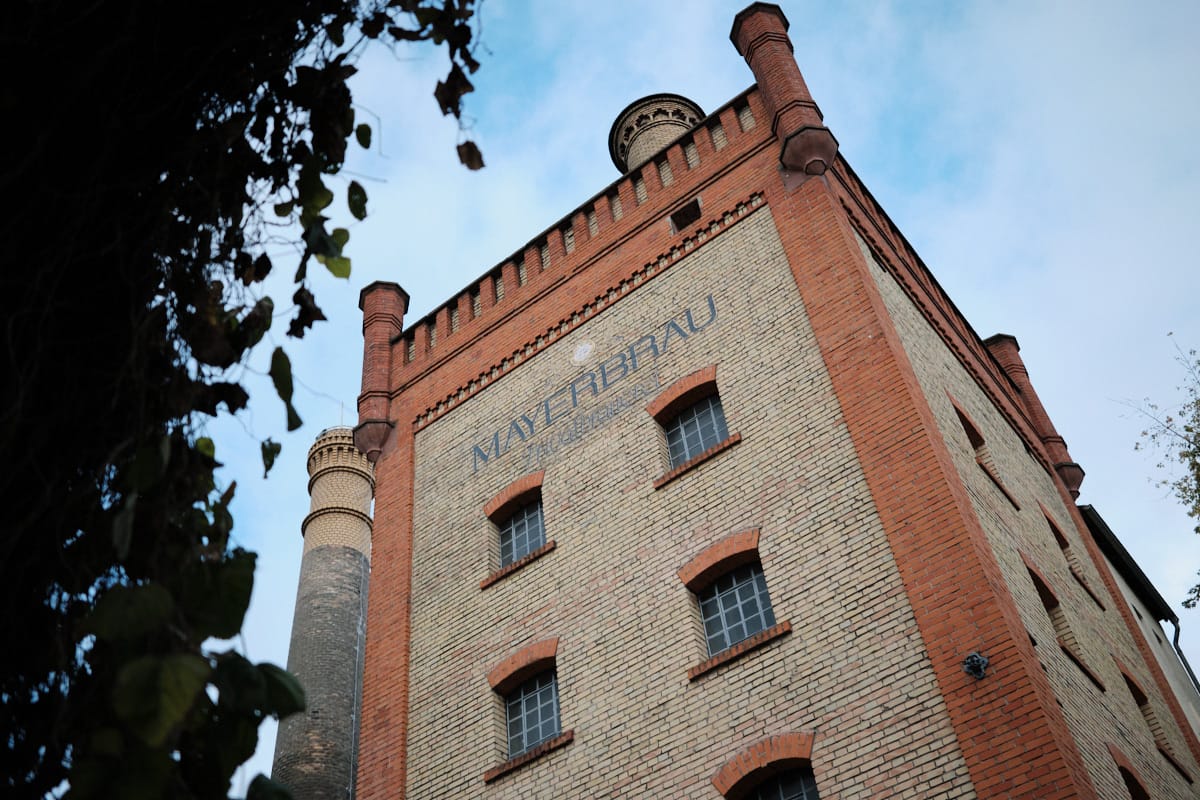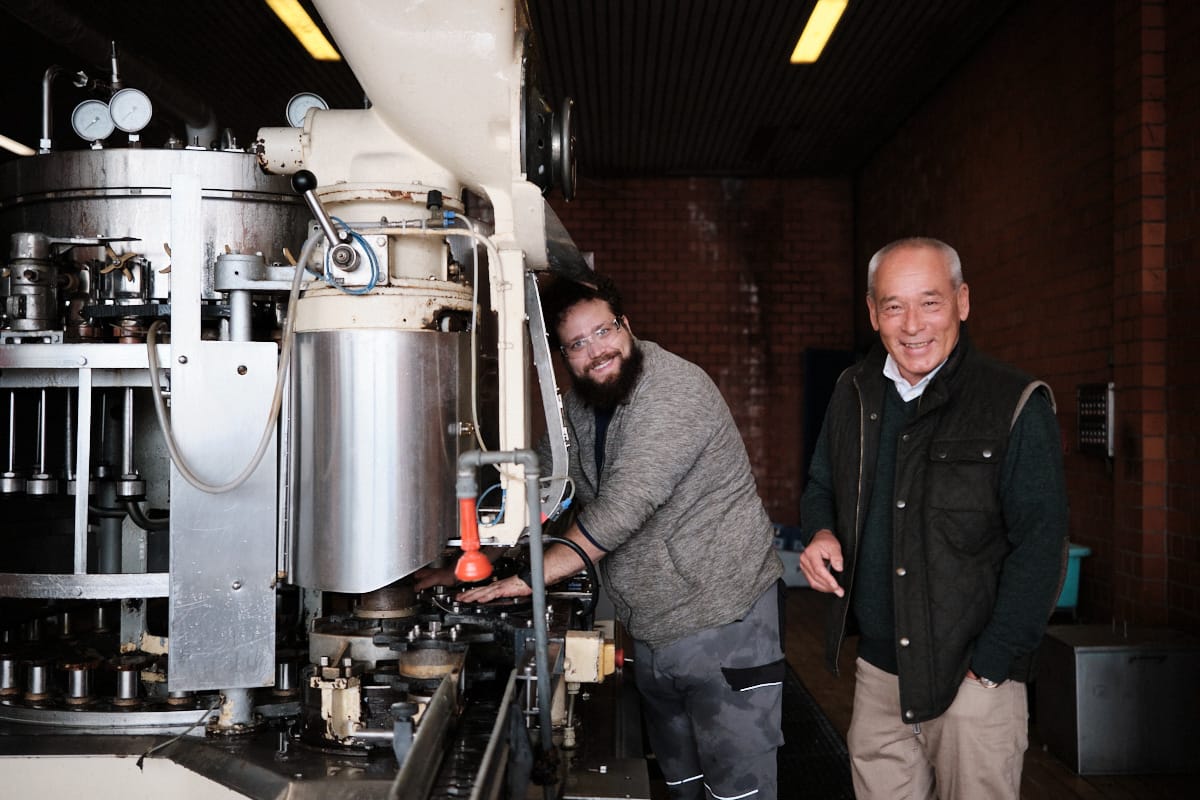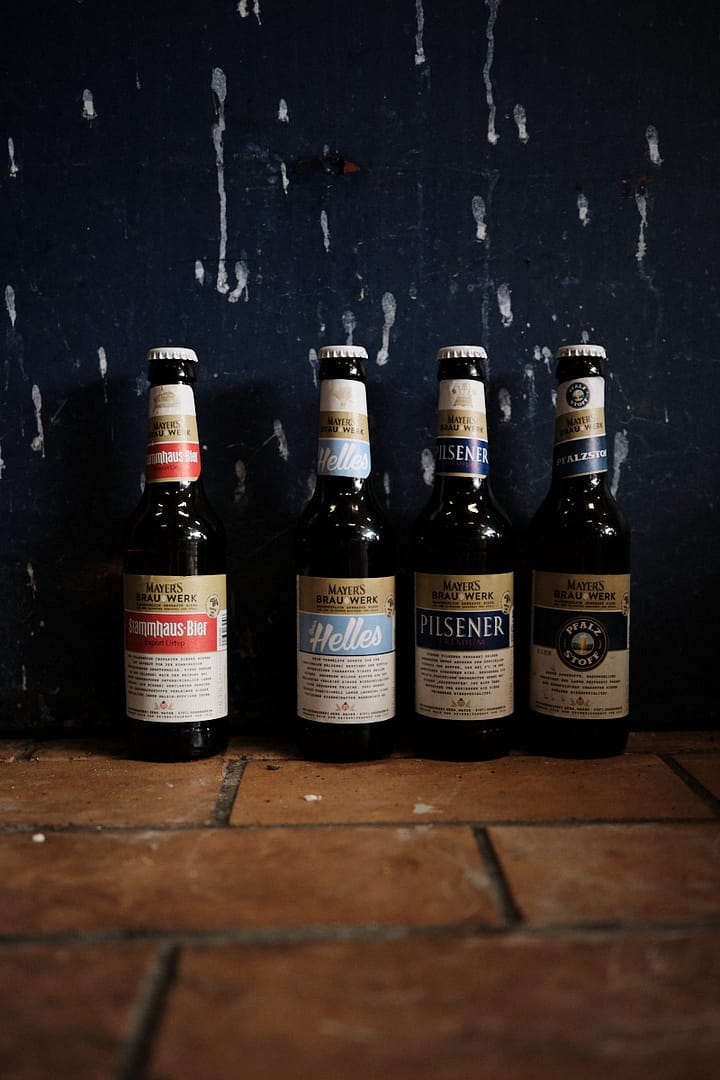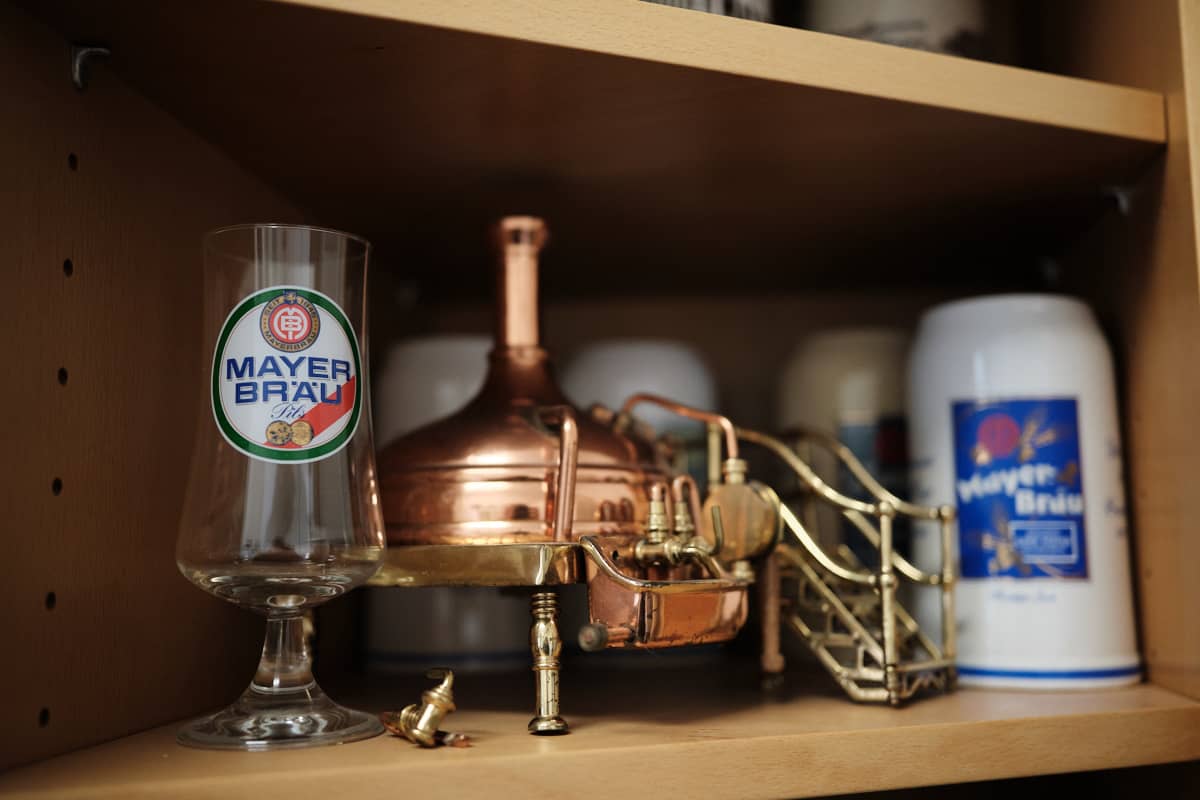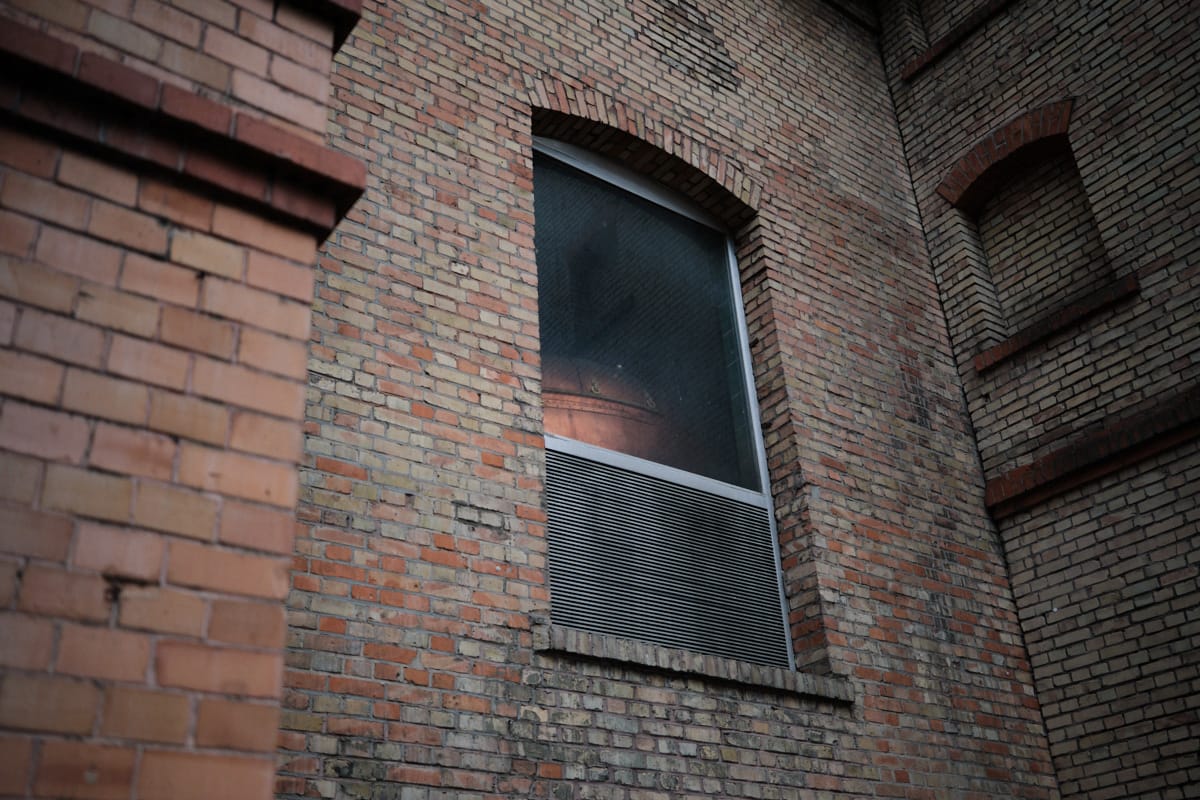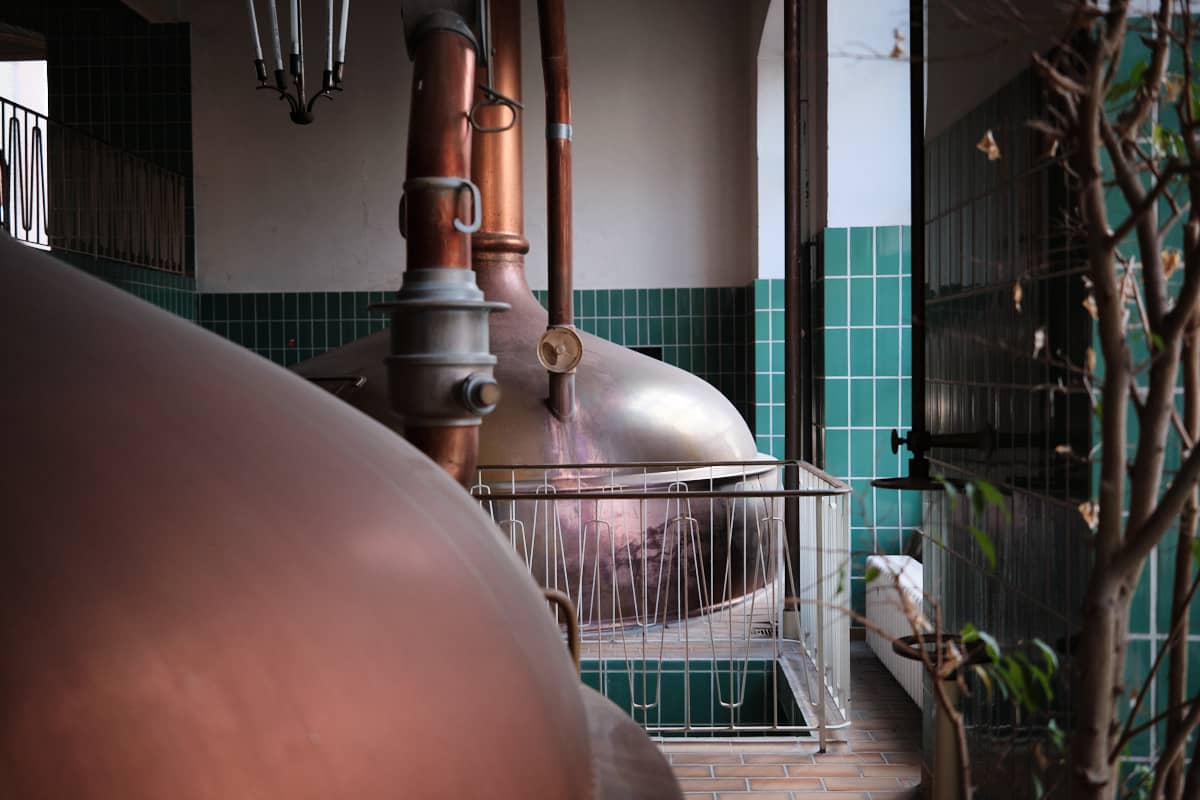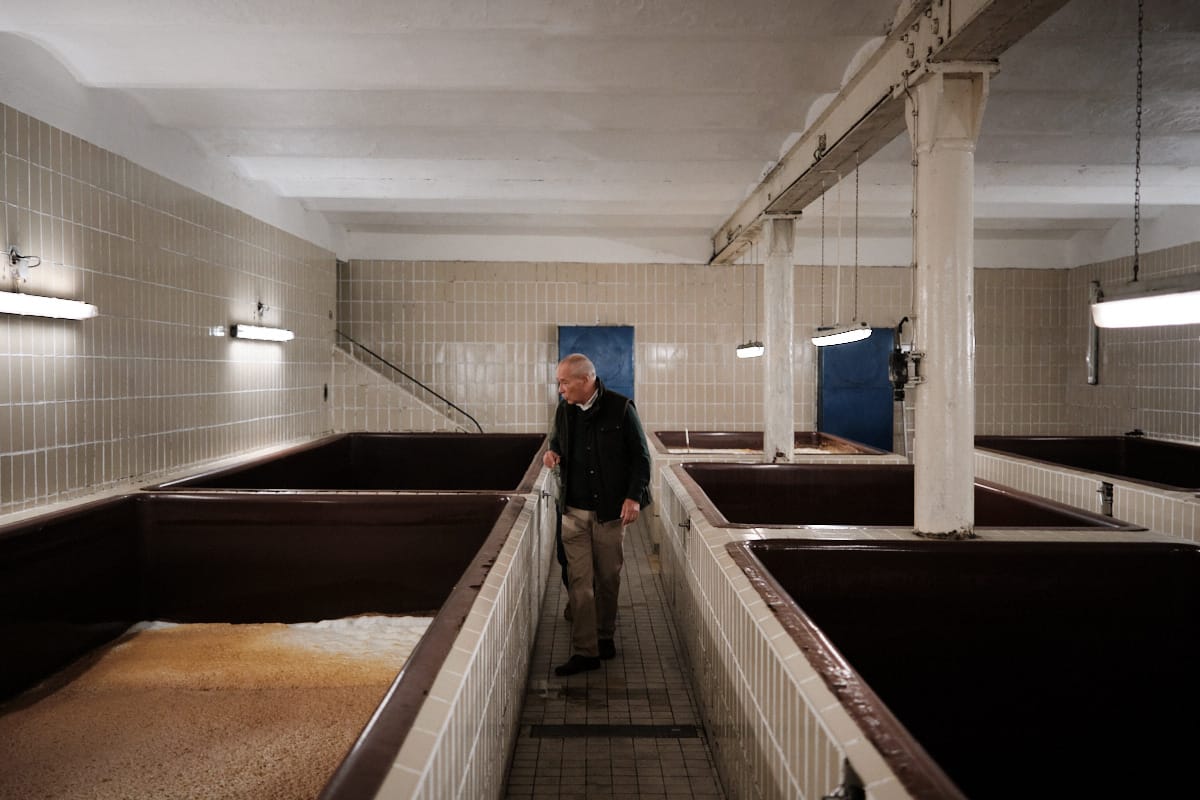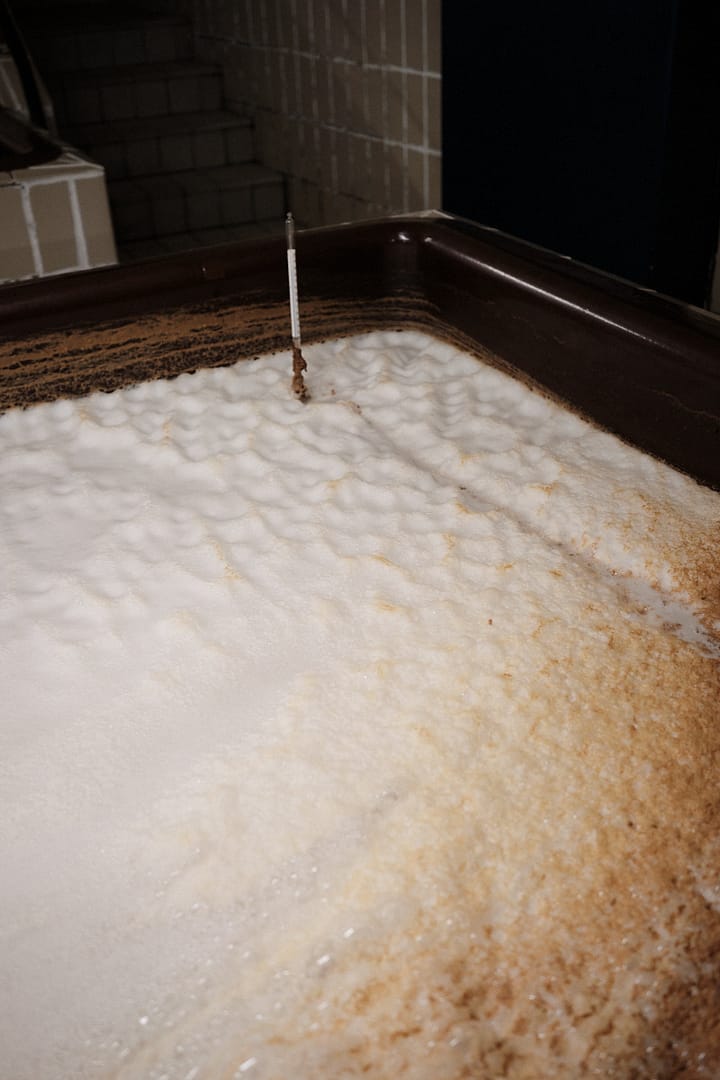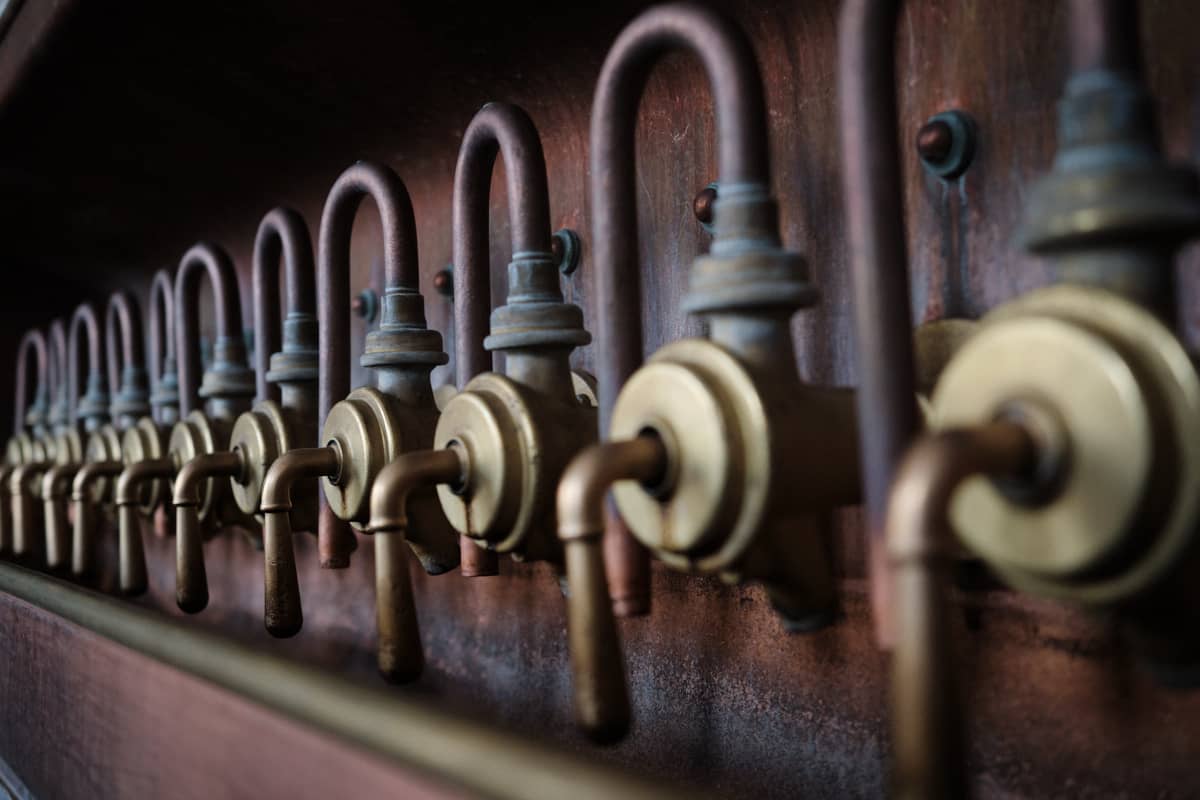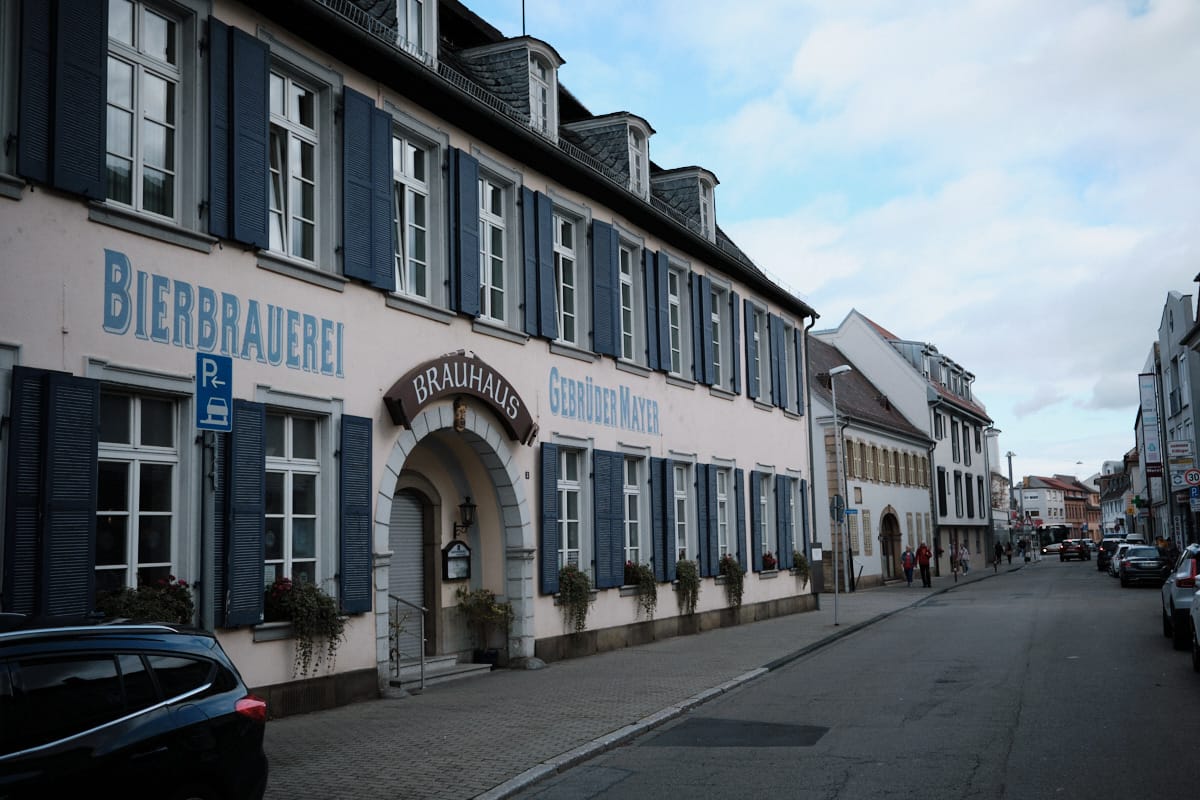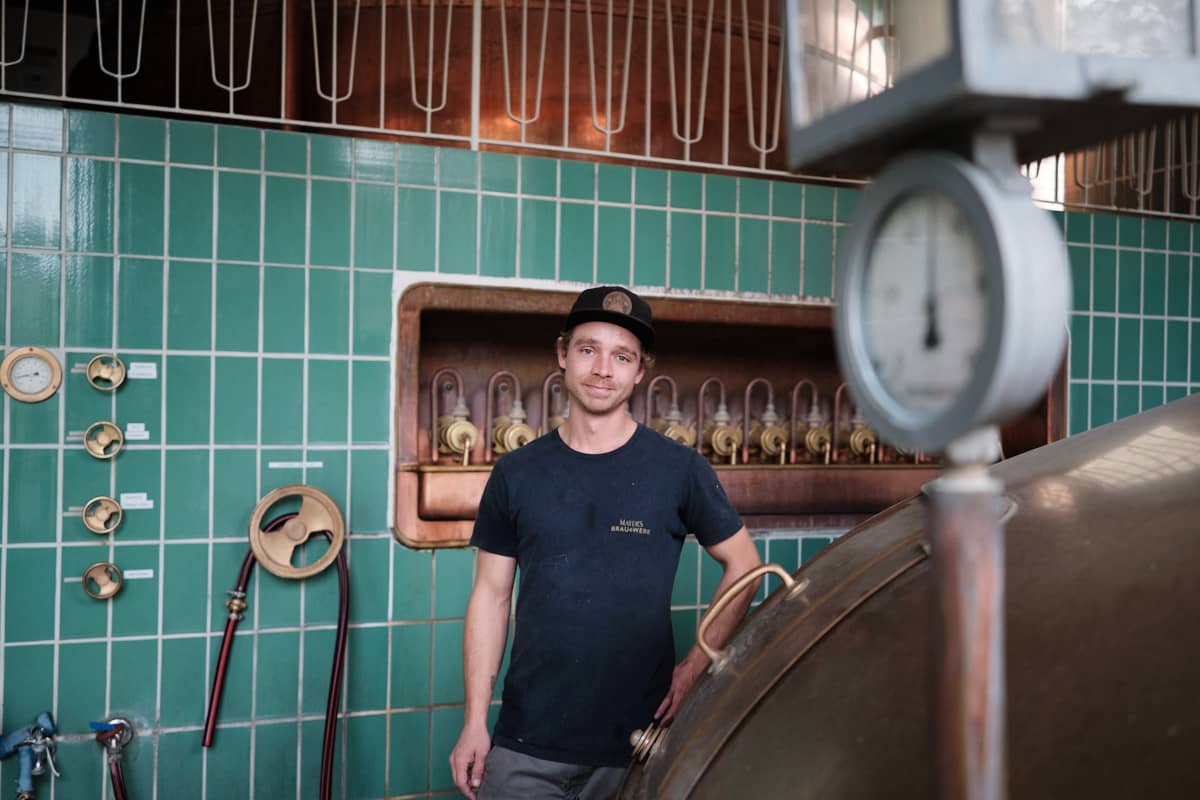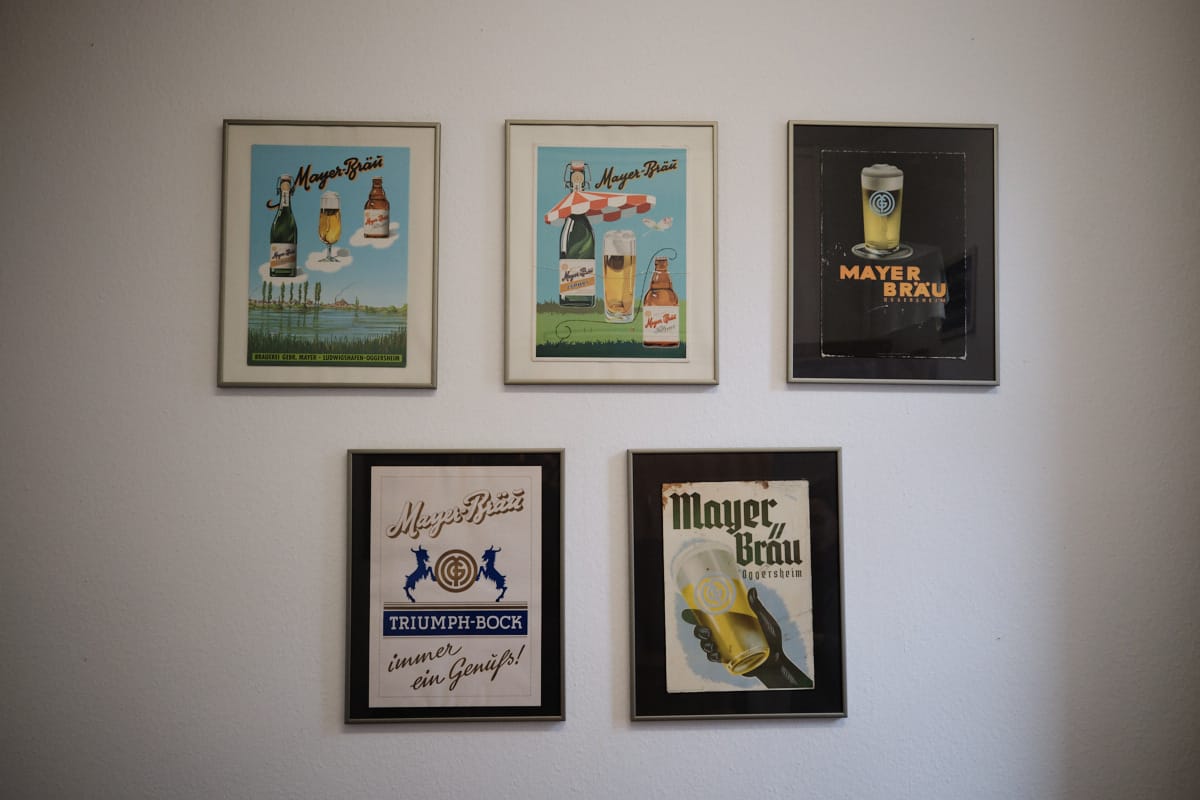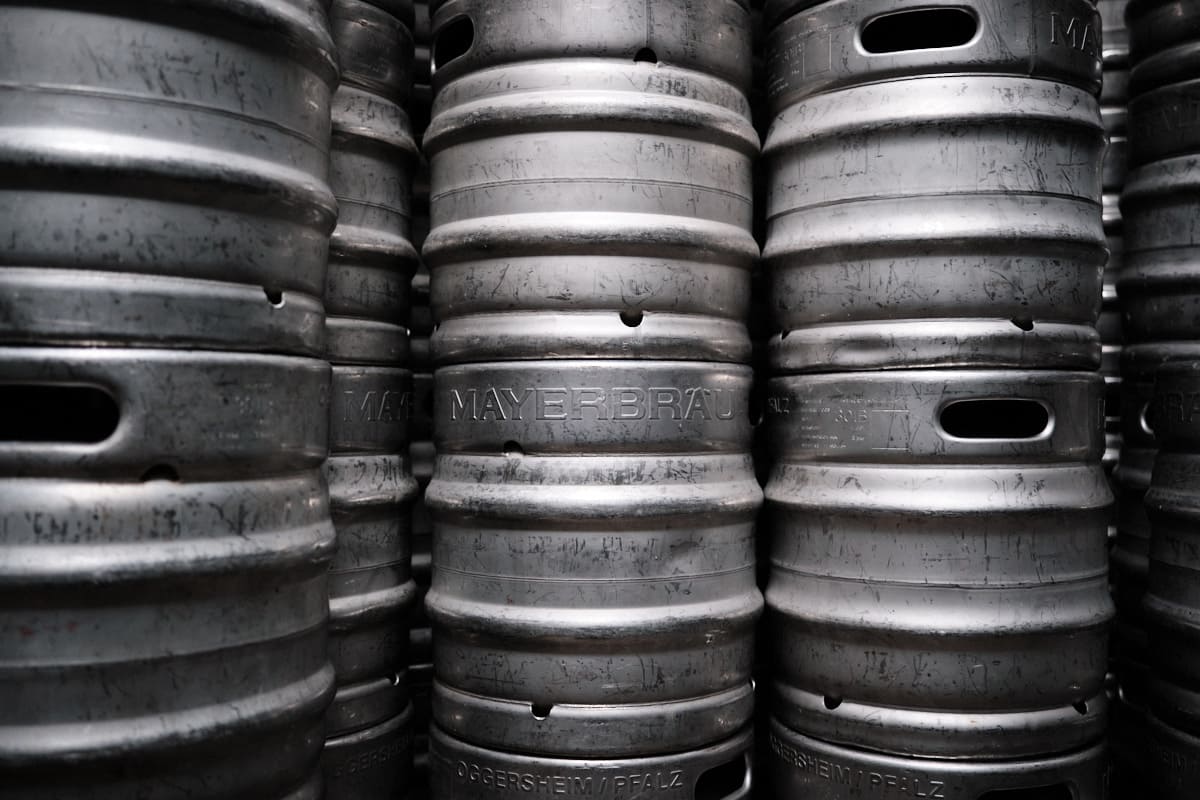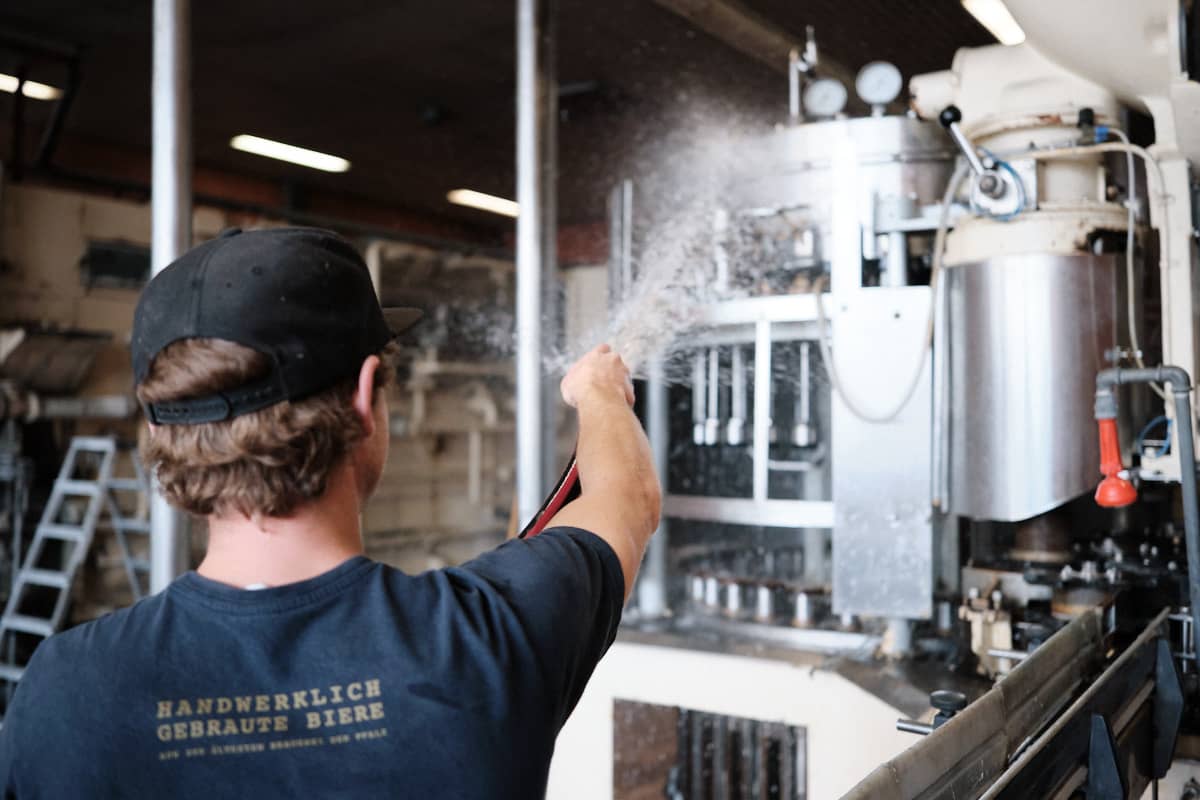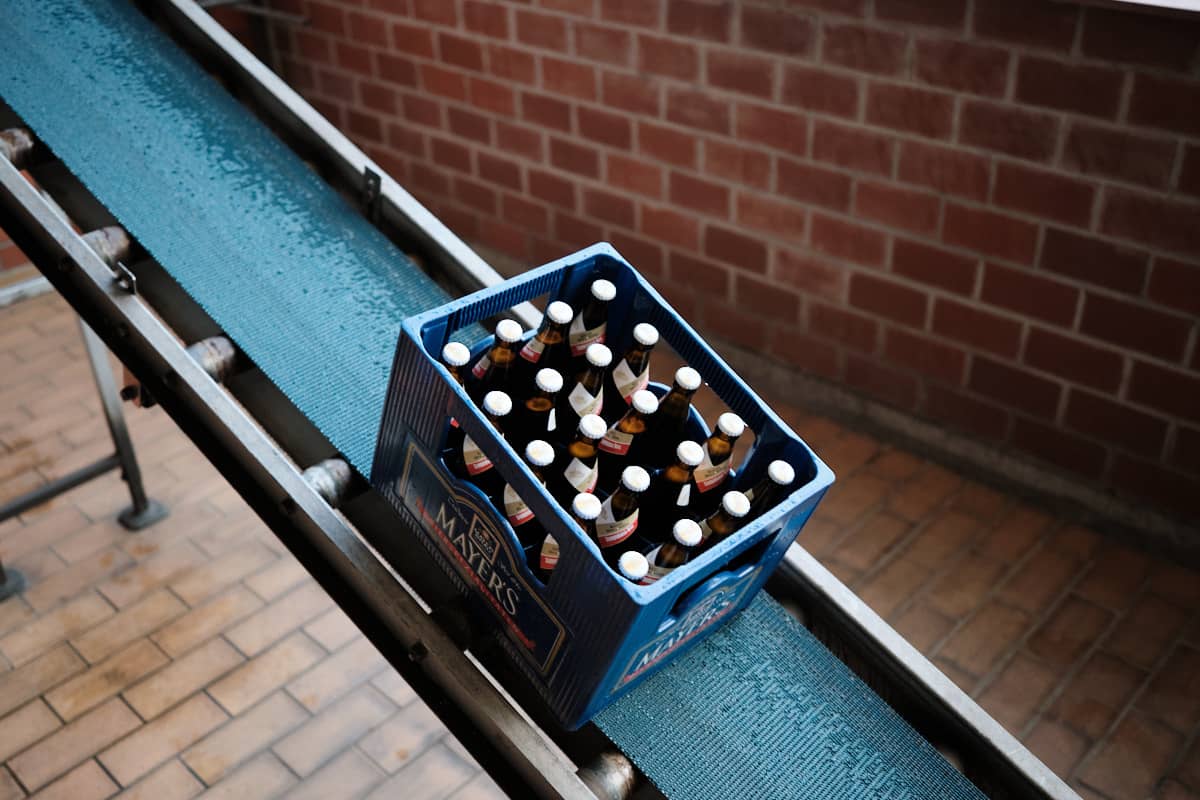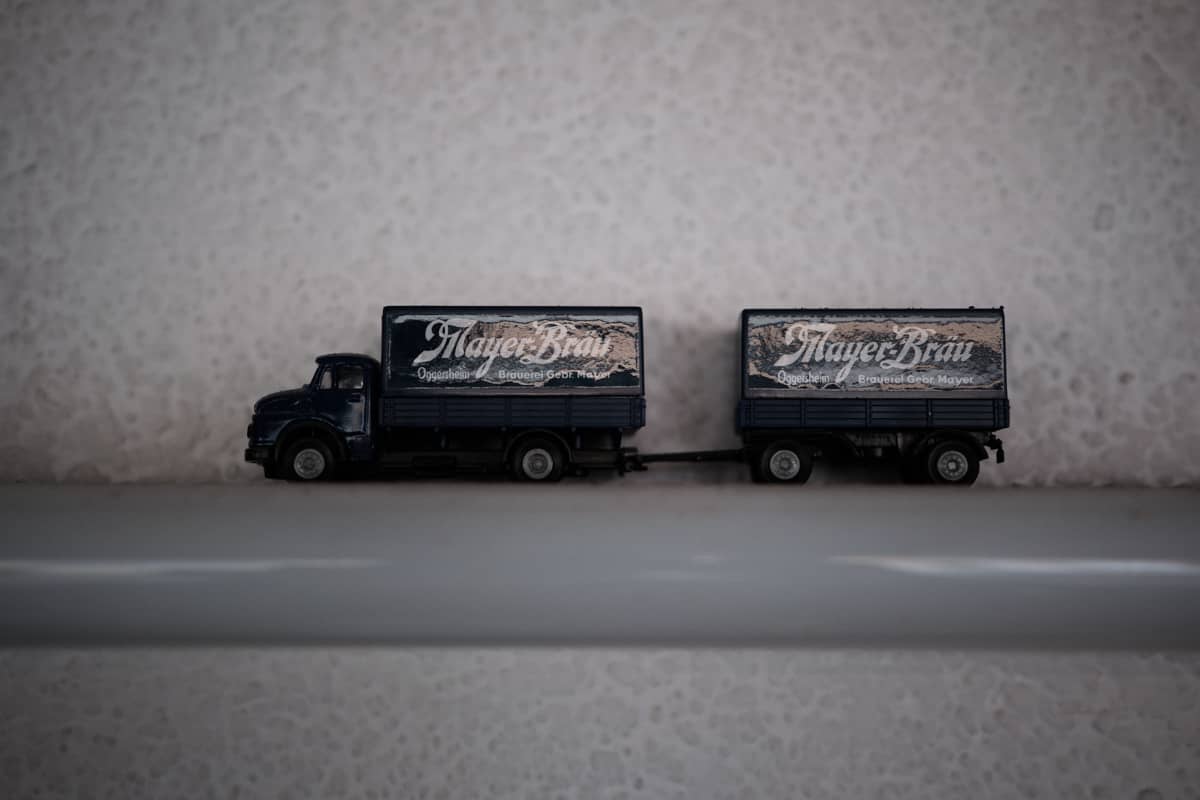Frank Mayer is the fifth generation to run the Mayer private brewery in Oggersheim, a district of Ludwigshafen. There, you can experience what is no longer a matter of course in the industry. You can watch the beer fermenting and even smell and taste it. A visit to the oldest brewery in the Palatinate.
The first thing you hear is rhythmic rattling. This is how the brown bottles start their journey through the factory hall of the Mayer brewery in the middle of Oggersheim, a district of Ludwigshafen, this morning. The recurring sound of them rattling against each other reverberates far across the courtyard. Milky panes cast a diffuse light inside. Steam rises, as water drips onto the tiled floor. It’s clanking, hissing and clattering so noisily that Frank Mayer has to shout to explain what is happening here: At the far end of the hall, the returned bottles come in, then find their way over large rollers to the sink and come out again in a scramble. Laid bare, wet and clean, they then line up one after the other until they are pushed one by one to the bottling station. Those with a blemish are sorted out. The others are filled with the amber fluid straight away—export beer in this case. Mayer grabs one of the bottles only just before it would get sealed with a crown cap.

“It’s very drinkable,” says the head of the brewery raising the bottle. Wearing a moss-green jumper, a matching waistcoat and a spotless white shirt beneath and sporting a tanned complexion and short grey hair, he leans against a tower of dark blue beer crates stacked in the brewery’s courtyard. His family has been brewing beer in the heart of Oggersheim since 1846. The typical brick malting tower and the brick brewhouse with its two chimneys were built a few years later. With its hipped roof and blue shutters you would expect to find the front building of the brewery in Munich rather than in Ludwigshafen. It shields the factory premises from Schillerstraße road and was already there when the brewery was founded. Just like in the past, the beer tapped inside this front building comes directly from the manufactory behind it—the oldest brewery in the Palatinate and the oldest company in Ludwigshafen, as the owners say. Frank is the fifth generation to run it. And he is convinced that “brewing beer is an artistic craft to pursue.”

This is most evident in the heart of the brewery: the brewhouse. It is still in operation unlike the malting tower, which is empty. Even from the outside, the huge, bulbous copper vessels shimmer through the large lattice windows. Inside the vessels water, malt and hops are transformed into beer. Actually just in a preliminary stage, because after repeated heating and filtering, the golden-brown liquid lacks one important thing: alcohol. This only develops over time in the fermentation cellar on the other side of the courtyard. Large, dark basins stand out against the light-coloured wall tiles in this cellar. In one of the smaller basins, some 15,000 litres of Pils are undergoing the fermenting process. Fine frothy foam covers the surface. Small bubbles of air are constantly flowing upwards from beneath. A thermometer at the edge of the basin shows twelve degrees. When it reaches six to seven degrees, the beer will be transferred to the floor beneath to mature for almost eight weeks.
